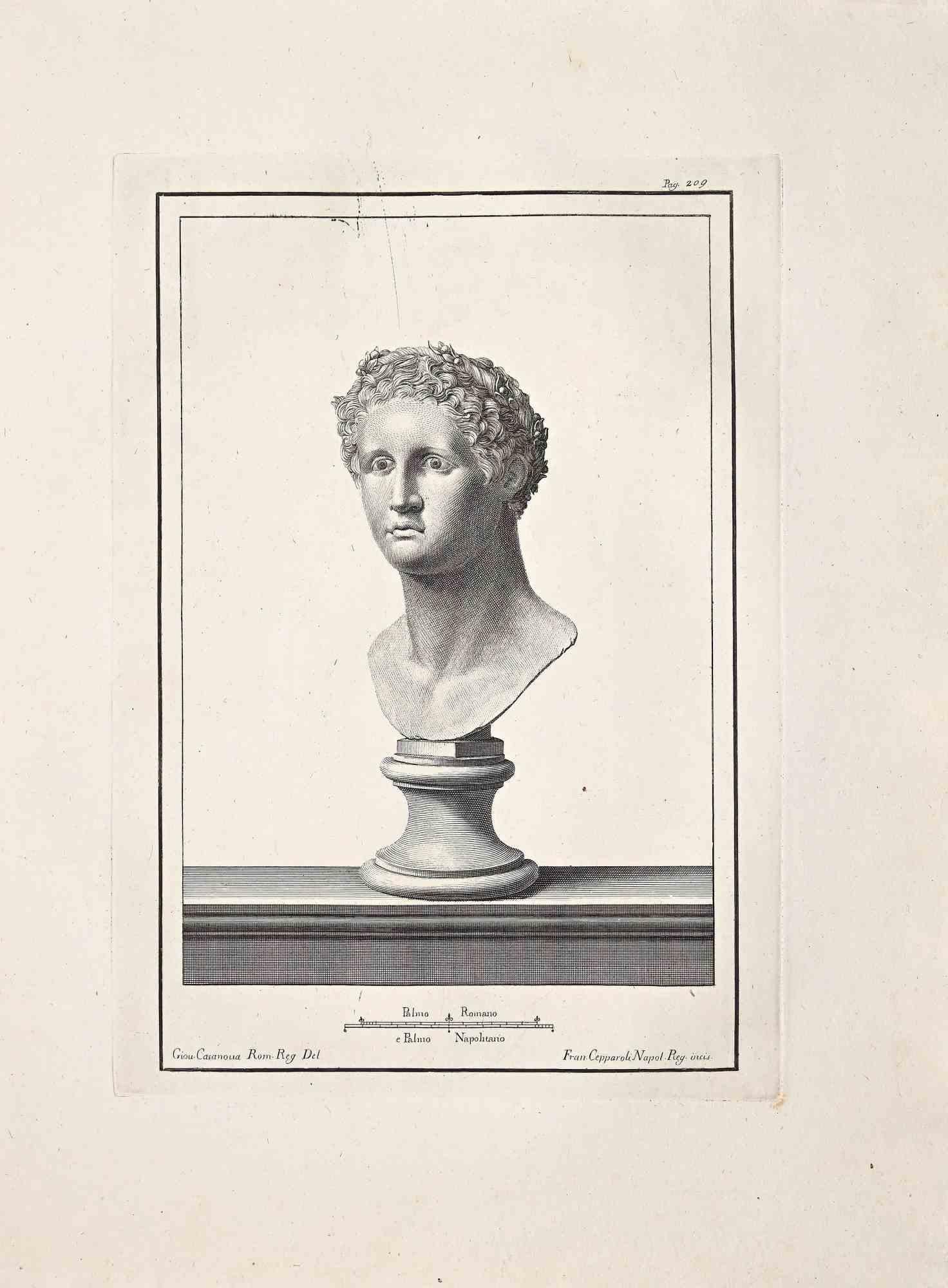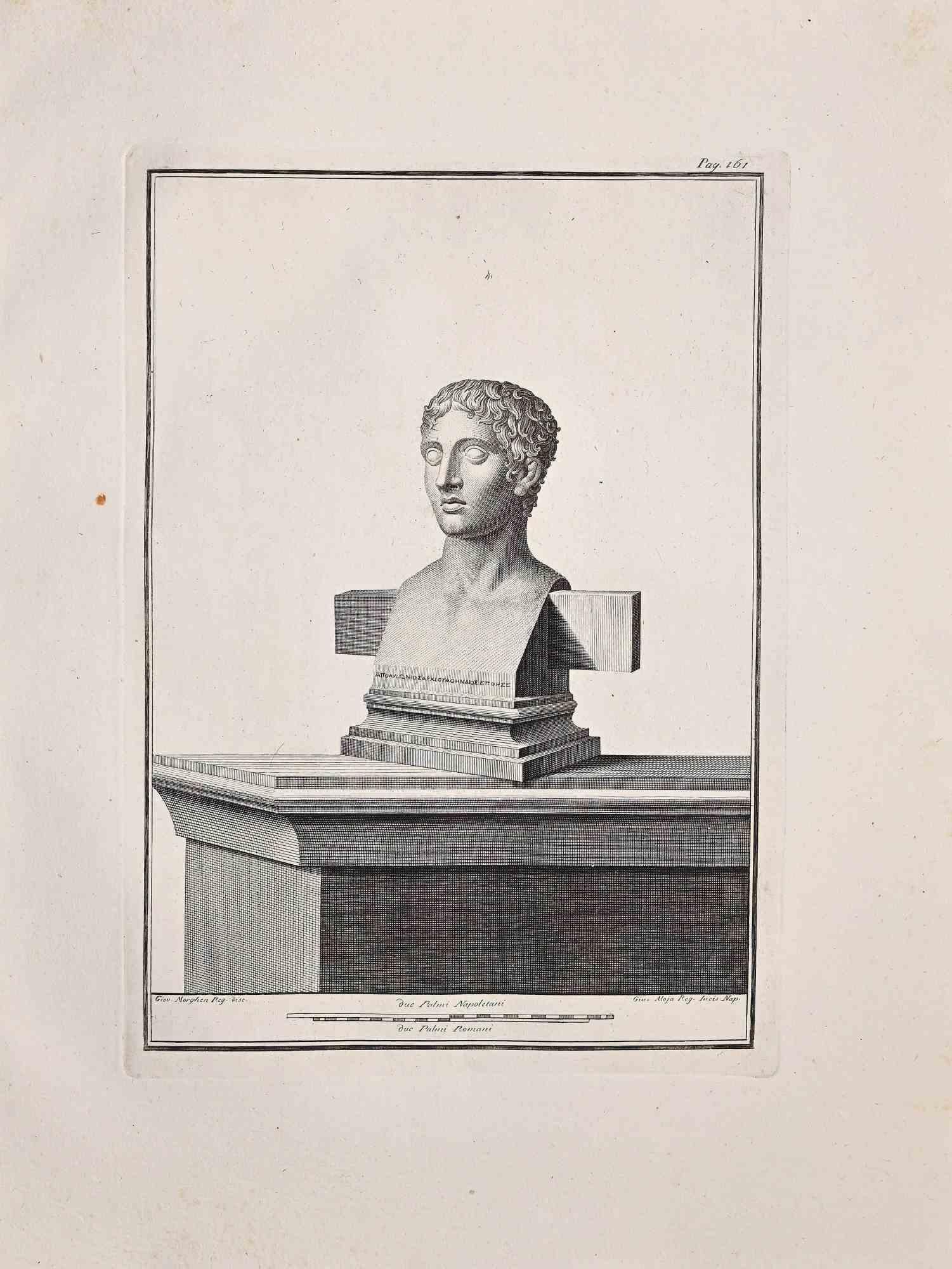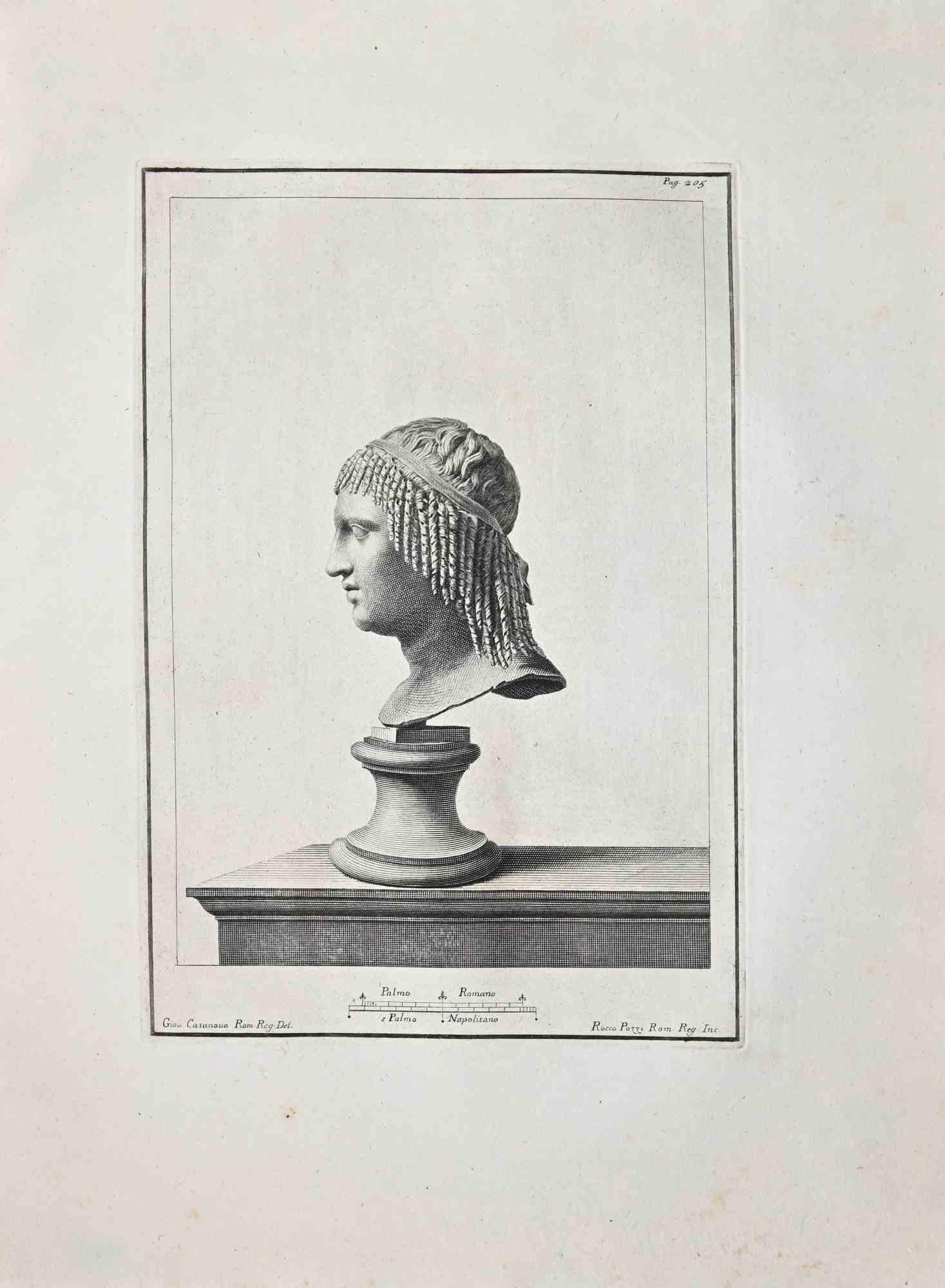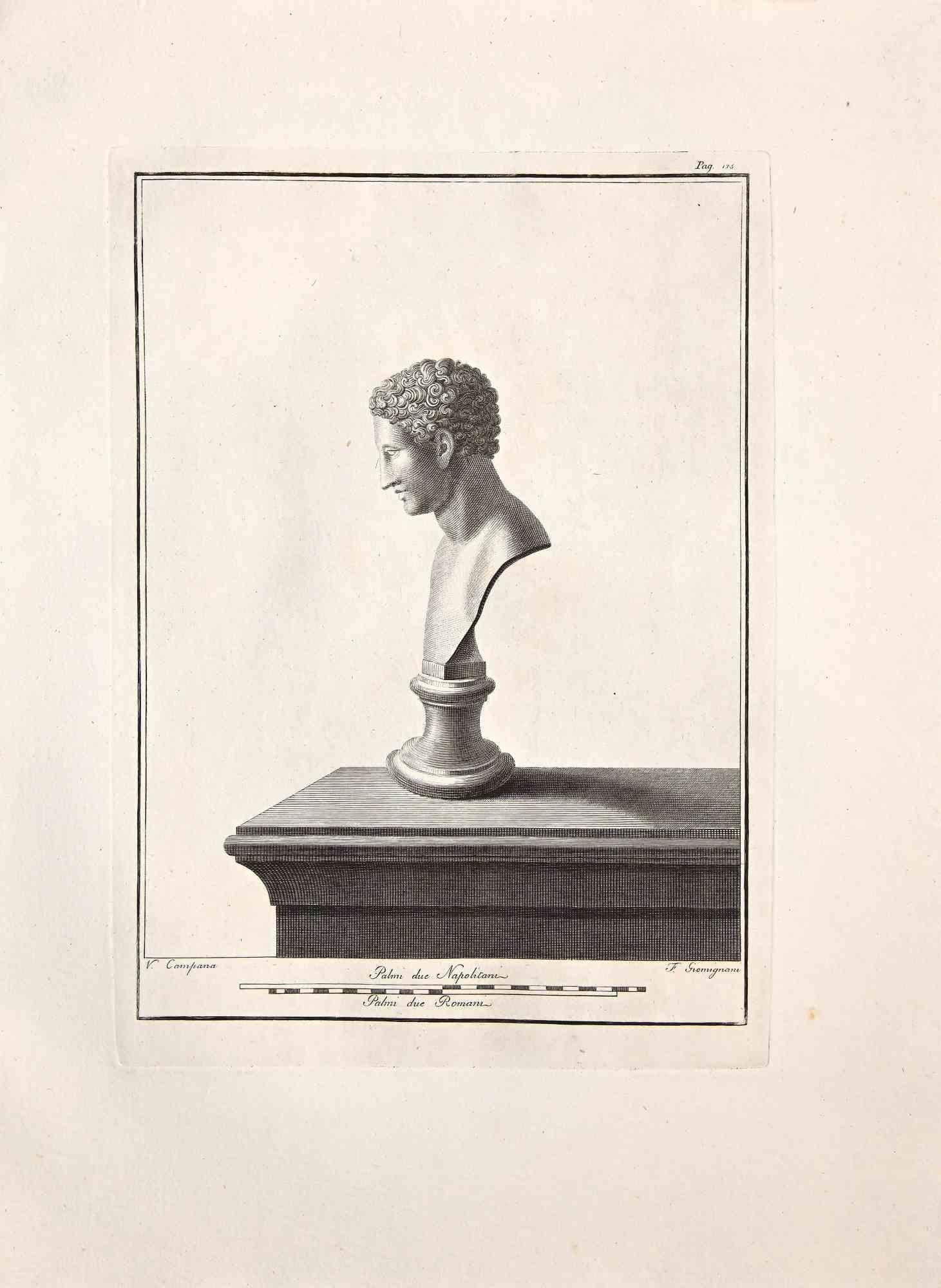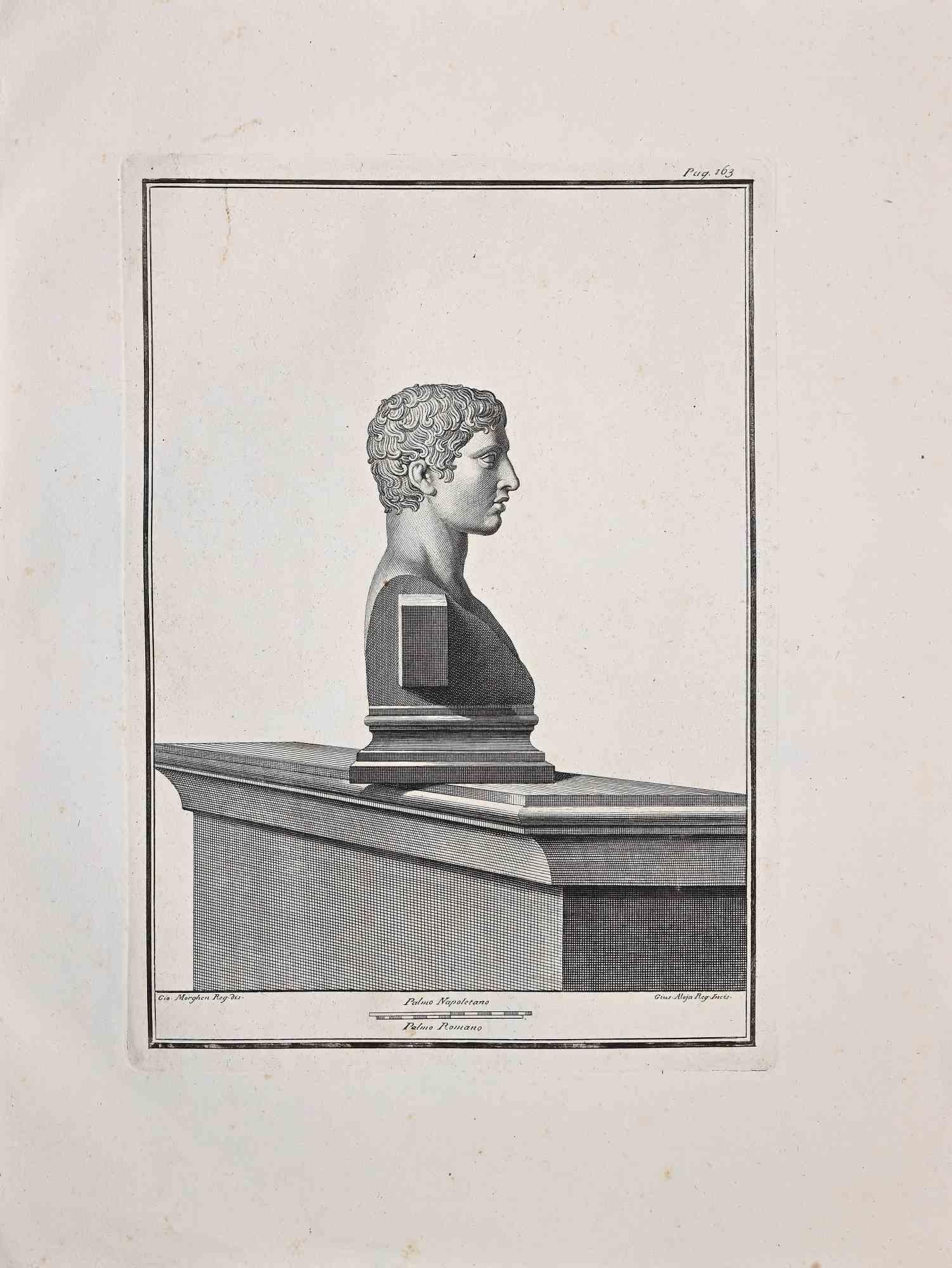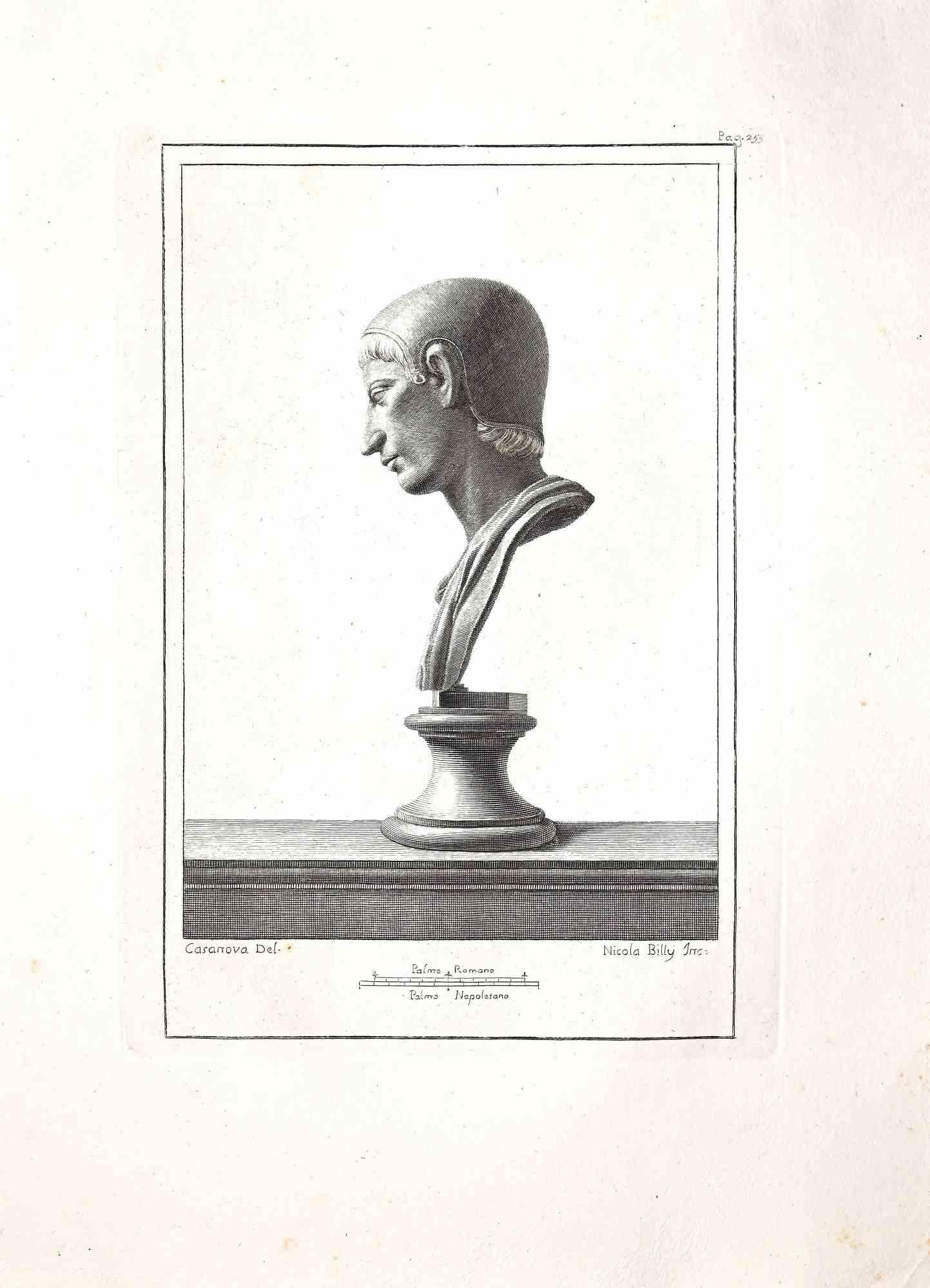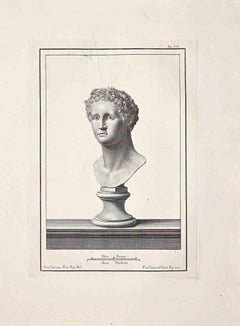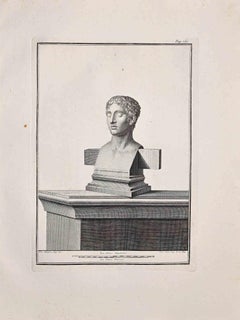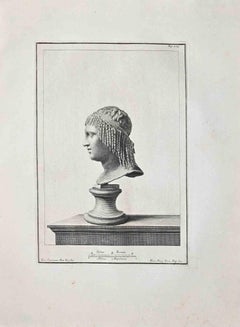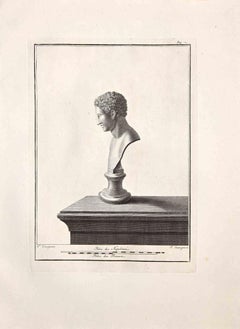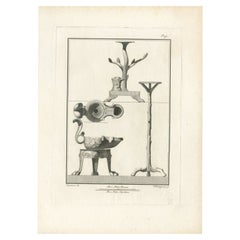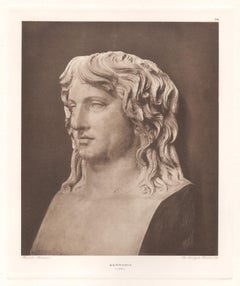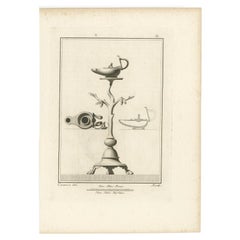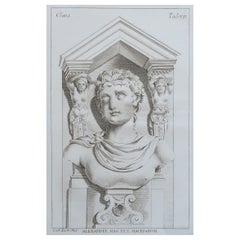Articles similaires à Anciennes antiquités d'Herculanum exposées - gravure originale XVIIIe siècle
Vous voulez plus d'images ou de vidéos ?
Demander au vendeur plus d'images ou de vidéos
1 sur 5
UnknownAnciennes antiquités d'Herculanum exposées - gravure originale XVIIIe siècleLate 18th Century
Late 18th Century
450 €
À propos de cet article
Antiquities of Herculaneum Exposed, original etching from the end of the 18th century, made by Various Old Masters.
Bon état.
Units of measurements typical of the period in the lower center of the margin: Palmo Romano - Palmo Napolet. . Bottom right and left the name of the artists: Gio.Casanova – P.Campana.
The etching belongs to the print-series Antiquities of Herculaneum Exposed (original title: Le Antichità di Ercolano Esposte), eight volumes of engravings of the finds from the excavation of the ruins of Herculaneum in the Kingdom of Naples (today Campania, Italy).
It was published between 1757 and 1792 by the Regia Stamperia and later these copies were delivered to selected recipients throughout Europe.
Despite the title, the Antiquity of Herculaneum shows objects from all the excavations undertaken by the Bourbons in the Gulf of Naples. These include Pompeii, Stabia and two sites of Herculaneum: Resina and Portici.
The Bourbon king Charles commissioned fifteen scholars to create a new “Herculaneum Academy” to study the finds and publish the results of the archaeological excavations of the sites.
The engravings are of high quality and the accompanying text shows a large scholarship.
They were made by 25 leading artists involved by the King to prepare drawings and engravings on the finds, among which we find Giovanni Elia Morghen, Carlo Nolli, Luigi Vanvitelli and Giovanni Battista Casanova.
The "Antiquity" was designed more to amaze readers with the quality of the objects in the collection of the King of Naples than to be used in research, following and increasing the interest of eighteenth-century society for classical culture and art in particular.
Through the exaltation of the classical concept of proportion and harmony, the book inspired the neoclassical movement in Europe, giving artists and decorators access to a vast workshop of Hellenistic motifs.
Ref .:
National Gallery (Washington), Mark J. Millard Architectural, IV (2000), n. 1.
L. Garcia y Garcia, Nova bibliotheca Pompeiana (2 v., 1998).
Royal Institute of British Architects, British Architectural Library ... First Printed Books, 1 (1994), no. 112.
U. Pannuti, Engravers and designers of the Royal Printing House of Naples in the 18th century: the publication of the Antiquities of Herculaneum, in Xenia antiqua, 9 (2000), p. 151-178.
V. Trombetta, The edition of The Antiquities of Herculaneum exhibited in Rendiconti of the Academy of Archeology, Letters and Fine Arts of Naples, 59 (1984), p.151-172.
- Année de création:Late 18th Century
- Dimensions:Hauteur : 50 cm (19,69 po)Largeur : 38 cm (14,97 po)Profondeur : 1 mm (0,04 po)
- Support:
- Mouvement et style:
- Période:
- Encadrement:Options d'encadrement disponibles
- État:Insurance may be requested by customers as additional service, contact us for more information.
- Adresse de la galerie:Roma, IT
- Numéro de référence:Vendeur : T-1260481stDibs : LU65039290122
À propos du vendeur
4,9
Vendeur Platine
Vendeurs premium dont la note est supérieure à 4,7 et le délai de réponse de 24 heures maximum
Vendeur 1stDibs depuis 2017
7 709 ventes sur 1stDibs
Temps de réponse habituel : 2 heures
- ExpéditionRecherche du devis...Expédition depuis : Monaco, Monaco
- Politique des retours
Certaines parties de cette page ont été traduites automatiquement. 1stDibs ne garantit pas l'exactitude des traductions. L'anglais est la langue par défaut de ce site web.
Garantie d'authenticité
Bien qu'il soit peu probable que la situation se présente, dans le cas où vous rencontreriez un problème d'authenticité d'un article, contactez-nous dans un délai d'un an pour obtenir un remboursement intégral. DétailsGarantie de remboursement
Si votre article n'est pas conforme à la description, est endommagé pendant le transport ou ne vous est pas livré, contactez-nous sous 7 jours pour obtenir un remboursement intégral. DétailsAnnulation sous 24 heures
Vous disposez d'un délai de 24 heures pour annuler votre achat sans motif.Des vendeurs professionnels agréés
Nos vendeurs de renommée mondiale doivent respecter des normes strictes en matière de service et de qualité, afin de préserver l'intégrité de nos fiches produit.Garantie d'alignement des prix
Si vous constatez qu'un autre vendeur a mis en vente le même article à un prix inférieur sur un autre site, nous nous alignerons sur ce prix.Livraison en toute confiance à l'international
Notre réseau de transporteurs de premier ordre propose des options d'expédition spécialisées dans le monde entier, y compris des livraisons personnalisées.Plus d'articles de ce vendeur
Tout afficherLes Antiquités d'Herculanum exposées - Gravure originale - 18ème siècle
Antiquités d'Herculanum exposées, gravure originale de la fin du XVIIIe siècle, réalisée par différents maîtres anciens.
Bon état.
Unités de mesure typiques de l'époque au centre ...
Catégorie
Fin du XVIIIe siècle, Maîtres anciens, Estampes - Figuratif
Matériaux
Eau-forte
Antiquités d'Herculanum exposées - gravure originale d'origine XVIIIe siècle
Antiquities of Herculaneum Exposed, original etching from the end of the 18th century, made by Various Old Masters.
Bon état.
Units of measurements typical of the period in the lo...
Catégorie
Fin du XVIIIe siècle, Maîtres anciens, Estampes - Figuratif
Matériaux
Eau-forte
Anciennes antiquités d'Herculanum exposées - gravure originale XVIIIe siècle
Antiquities of Herculaneum Exposed, original etching from the end of the 18th century, made by Various Old Masters.
Bon état.
Units of measurements typical of the period in the lo...
Catégorie
Fin du XVIIIe siècle, Maîtres anciens, Estampes - Figuratif
Matériaux
Eau-forte
Les Antiquités d'Herculanum exposées - Gravure originale - 18e siècle
Antiquités d'Herculanum exposées, gravure originale de la fin du XVIIIe siècle, réalisée par différents maîtres anciens.
Bon état.
Unités de mesure typiques de l'époque dans le cen...
Catégorie
XVIIIe siècle, Moderne, Estampes - Portrait
Matériaux
Eau-forte
Anciennes antiquités d'Herculanum exposées - gravure originale XVIIIe siècle
Antiquities of Herculaneum Exposed, original etching from the end of the 18th century, made by Various Old Masters.
Bon état.
Units of measurements typical of the period in the lo...
Catégorie
Fin du XVIIIe siècle, Maîtres anciens, Estampes - Figuratif
Matériaux
Eau-forte
Antiquités d'Herculanum exposées - gravure originale - 18ème siècle
Antiquities of Herculaneum Exposed, original etching from the end of the 18th century, made by Various Old Masters.
Bon état.
Units of measurements typical of the period in the low...
Catégorie
XVIIIe siècle, Moderne, Estampes - Portrait
Matériaux
Eau-forte
Suggestions
Herculaneum Monuments, 1762 : Assiette à gravure de Bayardi 61
Impression ancienne provenant de "Le Antichita di Ercolano Esposte". Une vaste étude des bronzes, statues, peintures murales et monuments d'Herculanum. Cet ouvrage monumental constit...
Catégorie
Antiquités, XVIIIe siècle, Estampes
Matériaux
Papier
Germany, British Museum Roman Classical sculpture photogravure
Germania
Photogravure issue d'une collection de photogravures représentant des marbres et bronzes grecs et romains conservés au British museum. Numéro de plaque au-dessus du coin su...
Catégorie
Années 1910, Autres styles artistiques, Estampes - Portrait
Matériaux
Photogravure
Impression ancienne des monuments de l'Herculanum par Bayardi, 1762
Impression ancienne provenant de "Le Antichita di Ercolano Esposte". Une vaste étude des bronzes, statues, peintures murales et monuments d'Herculanum. Cet ouvrage monumental constit...
Catégorie
Antiquités, XVIIIe siècle, Estampes
Matériaux
Papier
Grande impression originale du Grand Tour d'Alexander le Grand, 1776
Magnifique image d'un buste d'Alexander le Grand
Gravures sur cuivre
Publié par Monaldini, Rome, 1776
Papier vélin de bonne qualité
Expédition gratuite
Catégorie
Antiquités, années 1770, italien, Romain classique, Estampes
Matériaux
Plâtre
Gravures colorées à la main du 18e siècle représentant Herculaneum Frescos par Nicola Fiorillo
Ensemble de fresques romaines antiques de la série "Antiquités d'Herculanum", une gravure originale sur papier réalisée par Nicola Fiorillo au XVIIIe siècle. Trois mains gravures...
Catégorie
XVIIIe siècle, Estampes - Figuratif
Matériaux
Papier
Trois gravures d'éléments architecturaux italiens classiques en bronze du 19e siècle
Groupement de trois gravures représentant des éléments architecturaux italiens classiques conservés au Musée national de Naples, intitulées "Hydrie en bronze", "Marbre Naissance de B...
Catégorie
années 1880, Autres styles artistiques, Estampes - Nature morte
Matériaux
Gravure
